Michelle Cox's Blog, page 41
February 3, 2016
Sharecropper’s Daughter
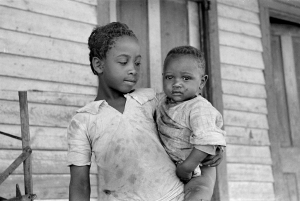 Murrell Louise Zapata was born on January 21, 1931 to Mississippi sharecroppers, Joe McDowell and Viola Flemming. Viola often worked in the fields beside Joe despite the fact that she had fifteen children, though there were never more than seven of them living in the house at any given time. Murrell was the youngest girl and was named by the man who owned the little grocery store in town. He happened to be making a delivery at the farm on the day Murrell was born and insisted that the new baby be named for his own daughter, Murrell Louise. Even though they were white, this family was very kind to the McDowells and sent a basket of fruit and candy to them every year at Christmas.
Murrell Louise Zapata was born on January 21, 1931 to Mississippi sharecroppers, Joe McDowell and Viola Flemming. Viola often worked in the fields beside Joe despite the fact that she had fifteen children, though there were never more than seven of them living in the house at any given time. Murrell was the youngest girl and was named by the man who owned the little grocery store in town. He happened to be making a delivery at the farm on the day Murrell was born and insisted that the new baby be named for his own daughter, Murrell Louise. Even though they were white, this family was very kind to the McDowells and sent a basket of fruit and candy to them every year at Christmas.
From a very little age, all of the McDowell children were expected to work in the fields, and Murrell was no exception. When she was eight, however, she was sent back up to the house to learn cooking from her mother. School was a very sketchy affair. All of the white children on the surrounding farms were picked up every day by a school bus and taken to the town school. “Colored” children were forced to go to the country school, which, Murrell says, “was like having no school at all.” Apparently the teaching was very poor, and Murrell says Viola was better able to teach her her numbers and her letters at home.
Near to the McDowell’s lived a white sharecropper family, the Dickson’s, though the oldest child, Annie, was “half black and half white.” Mrs. Dickson often told the neighboring children that Annie had “come out dark” because a bear had scared her while she was pregnant with her. None of the McDowell children believed her, but they pretended to. When Annie was six years old, she was no longer allowed to attend the town school, so Mrs. Dickson taught her at home and the McDowell children, too. Murrell says she learned a lot from Mrs. Dickson, but their “class” would frequently be broken up when Mr. Dickson came home drunk and called them awful names, though most of his anger was directed at poor Annie, who had become a good friend of Murrell’s.
When Murrell was just nine years old, a terrible incident occurred which, she says, she doesn’t often talk about. Murrell was at home watching her younger brothers while everyone else was in the fields when the sixteen-year old son of the family who owned the farm rode up on his horse, forced his way into the house and tried to rape Murrell. There was no one to hear her screams, but Murrell’s brothers, little though they were, managed to fight him off and he left. Murrell and the whole family were badly shaken, but they did not dare complain to the owners of the farm in fear of losing their place.
By the time she was thirteen, it was time for her Murrell to leave the farm, so Viola arranged for her to go live with an older sister, who promised to get Murrell some schooling. Instead, the sister arranged for Murrell to be a nanny for a white family. She worked at this for two years before appealing to her brother, Roosevelt, in Chicago. Roosevelt had apparently wanted Murrell to come live with him and his wife from the very beginning, but Viola was afraid his wife might mistreat Murrell. Viola eventually gave in, however, and sent Murrell to Chicago. Roosevelt’s wife, it turns out, did not mistreat Murrell, but enrolled her in night classes to try to get her her high school diploma and got her a job at a packing company, where Murrell worked for thirty-three years. She never did get her diploma.
Besides knowing Roosevelt and his wife, Murrell also had cousins living in Chicago, whom she began to see quite often and whom she even went to stay with sometimes. One night, she was at a party given by one of her cousins when she was introduced to a young Mexican man by the name of Granziano Zapata, who liked her immediately and proposed! Murrell was shocked and replied that they didn’t even know each other. “Yes,” Granziano apparently replied, “but I need a wife!” Murrell said she would think it over and three weeks later married him in her cousin’s home.
When Roosevelt found out, he was furious that she had married a Mexican, never mind the hastiness of it. “Why didn’t you tell me you were looking for a husband!” he shouted at her. “I would have found you one!” After he got to know Granziano, however, he actually liked him very much. Murrell says that her husband was very good to her and that they have always had a close relationship. They have been married for over 45 years now and had four children together.
Though Murrell worked for over thirty years at the packing house and then at the Salvation Army, her health has never been very good. She has suffered from asthma since she was a young girl, though no one knew what it was or how to properly treat it. Her health has seriously declined in the last several years, though she remains very positive. She is a remarkably gentle, loving, forgiving person despite everything that has happened to her in her life. For every story of the hatred she has encountered, she equally has a story of love. She says she has always been an optimist and that her faith has gotten her through her most difficult times.
*photo credit: Russell Lee
The post Sharecropper’s Daughter appeared first on Michelle Cox.
February 1, 2016
How to Get Your Book Published in 7000 Easy Steps – A Practical Guide. STEP 5: ENTER THE PUBLICIST
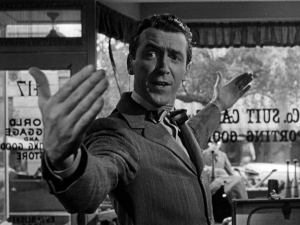 If you paid careful attention to the introductory materials or even mildly skimmed the author handbook, you should have by now at least heard of the concept of a publicist. But, like me, I fear you may have subconsciously passed over this bit, telling yourself that you didn’t need to read this part.
If you paid careful attention to the introductory materials or even mildly skimmed the author handbook, you should have by now at least heard of the concept of a publicist. But, like me, I fear you may have subconsciously passed over this bit, telling yourself that you didn’t need to read this part.
Well, sorry to tell you, darlings, but this is incorrect.
You very much need to hire a publicist. This might sound dreadfully expensive, and sorry, it is, so this might be the time to break open the piggy bank or “borrow” from your kids’ college fund. Not naming names, but suffice it to say I know someone, rather intimately, I might add, who resorted to this, never mind that one of said kids is currently in college, which makes for a somewhat sticky situation. But I digress.
This is where you begin to understand the difference between what a publisher does and what a publicist does. A basic rule of thumb is that the publisher is responsible for everything that has to do with producing your book – designing, editing, printing, distributing, selling. The publicist is responsible for everything that has to do with promoting your book, and (as silly as it sounds) developing you into a “brand” – not your book necessarily, but you.
This, unfortunately, is what I meant back in Step 3 by putting on the marketing hat. And if you’re still trying to land the deal from the Big 5 – comfortably assuming meanwhile that publicity is included in the package – don’t hold your breath. Sadly this kind of built-in publicity is becoming a thing of the past, especially for an unknown.
Nowadays, the Big 5 puts almost zero dollars into publicity and marketing for any of its authors, except the giants, who, ironically, don’t really need publicity at this point, but then again, product placement on that first table as you enter any given Barnes and Noble is expensive. The Big 5 are spending a lot of their publicity budget to make sure that the first book you see upon strolling in is one by Ken Follett or J.K. Rowling, as if you needed any reminding of their existence.
That leaves very little, if any, publicity dollars for you, the unknown, though this seems more than a little unfair. What this really means, however, is that no matter how you publish, you will be forced to either do your own publicity or to hire someone. And while it is, I suppose, plausible to do your own “buzzing,” hiring a publicist adds a flavor of legitimacy to you that you so desperately need.
Besides making you sound important at parties when you casually mention that you have a publicist, hiring a public relations firm is essential to your cause in that they not only begin building your social platform, but they are responsible for sending press releases and galleys to media outlets, setting up interviews on TV/radio and online, blog tours, reviews in the trades, endorsements, and speaking engagements as well as getting new fresh content published to extend your visibility and reach. They teach you that you must think beyond your little locale to a bigger, national, if not global, audience.
All of these things are of course crucial to your success, but the real reason you need a publicist, however, has to do, oddly, with the book distributor – Ingram. And Ingram, you will be astonished to learn, holds all of the keys to the publishing world.
Exactly how this entity called Ingram and the publicist are connected is a bigger story than this space allows for, dear readers, so we will pick it up next week in Step 6.
But don’t be discouraged – not yet, anyway!
The post How to Get Your Book Published in 7000 Easy Steps – A Practical Guide.
STEP 5: ENTER THE PUBLICIST appeared first on Michelle Cox.
January 27, 2016
Sent to an Institute Because of Her Stutter
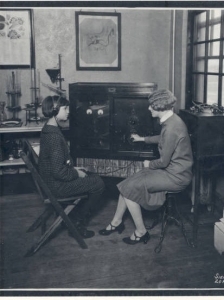 Mary Clifton was born on November 18, 1900 somewhere in the middle of Wisconsin, the third child of four. Her parents were of English and Irish descent. Her mother, Alice Burk, worked in a tailor’s shop, and her father, Edwin Cooley, worked in a flour mill. There was nothing exceptional about Mary’s birth except that she was breech. As she began to walk and talk, however, it was discovered that she had a speech impediment – a stutter – which everyone said was because she had been a breech baby.
Mary Clifton was born on November 18, 1900 somewhere in the middle of Wisconsin, the third child of four. Her parents were of English and Irish descent. Her mother, Alice Burk, worked in a tailor’s shop, and her father, Edwin Cooley, worked in a flour mill. There was nothing exceptional about Mary’s birth except that she was breech. As she began to walk and talk, however, it was discovered that she had a speech impediment – a stutter – which everyone said was because she had been a breech baby.
Mary did the best she could with her affliction, and when she was four, the family moved to Nebraska. Mary grew up there and began high school, but her speech impediment was so bad that Alice and Edwin decided to send her back to Wisconsin to a special institute in Milwaukee to help her overcome it.
The institute, it turned out, was mostly a school for deaf students, but it was there that Mary met a man who took an interest in her case. He felt Mary was in the wrong place and recommended that she complete high school in Chicago. After contacting her parents, he enrolled Mary in a school there and made arrangements for her to stay with a family he knew. Mary says that though the family was kind to her, she missed home very much.
So it was that when she graduated, Mary returned to Nebraska and there attended one year of business school in hopes of getting a job as a secretary. Her stay in Milwaukee and then in Chicago had helped her stuttering a bit, but not much, and after completing the year of business training, she decided to repeat it in hopes that her speech would improve.
As the second year came to a close, she struck up her courage and attempted to finally go out and find a secretarial position. No one, however, would hire the stuttering secretary. Depressed, Mary eventually gave up her dream and decided to go back to Chicago, where she spent the next fifteen or twenty years working a variety of odd jobs and making her own way. She had a small group of friends, but she believed the possibility of romance and love hopelessly beyond her reach.
In her late thirties, however, some friends introduced her to one Clarence Clifton, a machine shop operator. Clarence was the same age as Mary, but he was a widower with three children. Clarence and Mary began dating, Clarence obviously overlooking Mary’s stutter, though the more she got to know him, the less pronounced it became. Eventually Clarence proposed to Mary, who was head-over-heels for him, and they married shortly after.
It was at this point in her life that Mary, perhaps because she was surrounded now by Clarence’s unconditional love, began to blossom. She tried to be a good mother to Clarence’s children, and, at Clarence’s encouragement, decided to try again to get a job as a secretary – her dream. She was absolutely thrilled, then, when she was hired by a law firm as the staff secretary. She worked there for several years before she quit to take a similar secretarial position at a building products company. It was a place she thoroughly loved, and she stayed there until she was 65, though she continued on working as a temp for many years even after that.
So in love with Clarence was Mary that she seems to have adopted all of his hobbies. The two of them enjoyed watching wrestling on television as well as fixing up old cars. If pressed to name something she likes for herself, she will say reading or needlework, but not with much enthusiasm. Mary and Clarence had many happy years together until 1959 when Clarence died of a heart attack. Mary was devastated by his death, but continued on her own until age 90 when she felt she couldn’t live alone any longer. She then asked her niece to help her find a nursing home, which she seems to have adjusted to pretty well.
Her speech impediment still lingers a bit as she tells stories of the past, and though she is able to recall them very clearly, she has difficulty in placing them in order. Mary says she has always been a nervous person, though she has tried all her life to hide it.
The post Sent to an Institute Because of Her Stutter appeared first on Michelle Cox.
January 25, 2016
How to Get Your Book Published in 7000 Easy Steps – A Practical Guide. Step 4: THE COVER BEGINS
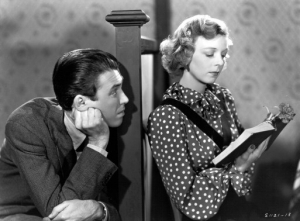 The next thing your publisher will most likely send you is a “Cover Memo,” which isn’t really a memo at all, but rather a big long document that you have to complete so that the art director and her team can begin designing. This seems exciting – and it is! – but a little daunting, too, as everyone knows that the cover is what sells your book.
The next thing your publisher will most likely send you is a “Cover Memo,” which isn’t really a memo at all, but rather a big long document that you have to complete so that the art director and her team can begin designing. This seems exciting – and it is! – but a little daunting, too, as everyone knows that the cover is what sells your book.
You may be wondering at this juncture – and you would be justified – why the art director or perhaps some lowly person on the team, selected either at random or maybe by drawing straws (pun intended), doesn’t just read your manuscript in order to get the real essence of your novel and then be able to naturally compose the perfect cover.
I had hoped to spare you the painful truth until later when you would be better able to take it, but perhaps I should reveal now that no one over there – not just the art department – has time to read your novel. They have hundreds of books to publish and covers to create, so it falls on you to sum up your novel succinctly and perfectly enough – via this handy cover memo – for them to get the gist.
Gone are the days, I’m afraid, when the whole editorial, art and publicity teams of some ancient publishing house sat down together with an appropriate beverage to enjoy the fruit of your labors. Maybe this is what happened in previous decades, or maybe even centuries, when the editor-in-chief would turn the last page, toss it onto his desk with a sigh and say to his lowly assistant “That was a damned good story, wouldn’t you say, Jones? Let’s get to work publishing this!”
No, somehow things have all gone awry in these modern times. Now it seems that the reading of your book by the production team happens much later down the line – if ever! Before you get all upset by this, just realize that you’ve submitted enough of your manuscript during the vetting process for them to judge it worthy of publication, so just get over it, already.
Dutifully, then, conscious of the weight that is upon you, take a deep breath and begin filling out the required document which may or may not include things like:
ten adjectives that best describe the book (like…? Awesome! Riveting! Like that?)
ten adjectives that the book is not (like…? Awful! Crap! I don’t get it.)
a 200-word description of the book (similar to, if not exactly, what will go up on Amazon – no pressure!)
your target audience
your book’s message (message?)
a full synopsis (don’t they already have this somewhere? I’m sure I sent it in with the original manuscript)
author bio (now, I know they have this)
Lest you feel alone in your anxiety, I will share that the item that caused me the most amount of perspiration was the “200-word description” potentially destined to be uploaded onto Amazon. Amazon? I thought worriedly. We’re already at the Amazon stage? I thought we were just on the cover! The thought that what I wrote right now might be the deciding factor for what I hoped to be hundreds (maybe thousands!) of people as to whether or not they would click the “add to cart” button nearly paralyzed me.
Shouldn’t there be some editorial team strategizing about the perfect description, the perfect imagery? Were they really leaving this all up to just me? It seemed risky in the extreme, and, distraught, I finally decided that a phone call was warranted. When I eventually had the correct powers that be on the line, I alluded to the fact that perhaps someone should assist me in this rather important item and that maybe somehow something had been overlooked?
After a brief, irritated pause, they responded. “Well, you did write a novel, right? Shouldn’t you be able to write a 200-word description?”
And that, dear reader, is the real lesson for today. Buck up! You’re just beginning.
The post How to Get Your Book Published in 7000 Easy Steps – A Practical Guide.
Step 4: THE COVER BEGINS appeared first on Michelle Cox.
January 20, 2016
“Something About the Eyes”
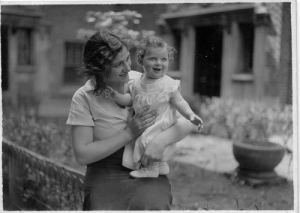 Helen Conforti was born in Chicago on February 9, 1922 to Polish immigrants – Wilhem Bujack and Mary Jagielski. Mary worked long, long hours sewing table pads in a factory, and Wilhem worked as “a splitter,” a job he had done from the age thirteen, which consisted of “splitting” hides for jackets, shoes, gloves, etc. Apparently he could tell just by feeling a hide what it would be good for. Helen says that she and her father were “buddies” and often went bowling or dancing together.
Helen Conforti was born in Chicago on February 9, 1922 to Polish immigrants – Wilhem Bujack and Mary Jagielski. Mary worked long, long hours sewing table pads in a factory, and Wilhem worked as “a splitter,” a job he had done from the age thirteen, which consisted of “splitting” hides for jackets, shoes, gloves, etc. Apparently he could tell just by feeling a hide what it would be good for. Helen says that she and her father were “buddies” and often went bowling or dancing together.
Helen attended high school until she was sixteen and then quit to work in a factory. There, she was befriended by a boy named Joey, who often persuaded Helen to come to his baseball games. One day he introduced her to some of the players, including his friend, Leo Kluczynski, the pitcher. It didn’t take Leo long to ask Helen out, and they quickly fell in love and married.
Soon after, however, Leo was drafted for the war. Helen was already pregnant with their first child and panicked at the thought of giving birth without Leo there. She pleaded with the draft board, who agreed to let Leo stay until the baby, Leo, Jr. was born. From there, Leo had to report to the navy and was stationed in Hawaii. Miraculously, he made it through the war unharmed, but on his way to pick up his discharge papers, he was tragically hit by a car and killed. Helen, only twenty-three, had just given birth to their second child, Kathleen, when the news came through.
Helen spent the next four years struggling to make it on her social security checks with two children and no job. Mary and Wilhem, who lived across the street, were able to offer some help, but one day, Mary decided to take matters into her own hands. She brought home a young man, Daniel Conforti, whom she worked with at the factory and introduced him to Helen. Apparently the two hit it off right away, and Daniel Conforti, just twenty-four at the time, came to see Helen more and more until he finally worked up the courage to propose. They were married soon after. Helen says they had “a happy life together,” and had six more children. Eventually Daniel became a purchasing agent for the University of Illinois Hospital, and Helen remained a housewife, which she says she loved.
Two tragic things happened to the Conforti’s, however, to mar their happiness – two of their children died. The first was their son, Michael, who died at age thirty-two in a fire. Helen says that he predicted it, saying to her that he “wouldn’t live to see thirty-three.” Then Kathleen, Helen’s second child with Leo, died when she was forty-five of spine cancer.
Kathleen’s death was perhaps the hardest for Helen to bear. She always had a special bond with Kathleen that she could never quite explain – “something in the eyes” is how Helen describes it. Perhaps it was that or that their bonding occurred at such a sad time in Helen’s life, Kathleen being born into the world just as Leo was leaving it. Kathleen was slow to learn to walk and talk and always had a myriad of health problems. Helen cried and grieved heavily during the last three years of Kathleen’s life as she battled her cancer.
Despite the sorrows Helen faced in her life, however, she has remained a positive, optimistic person – always up for a laugh and a joke. She describes herself as “happy-go-lucky” and has been frequently known to say “tomorrow is another day.” She enjoys her seventeen grandchildren and seven great-grandchildren immensely. Besides being a life-long member of the women’s club at St. Hedwig, she enjoys collecting dishes, gardening, baking and sewing (she always sewed all the kids’ clothes over the years.) When asked if she has done any traveling, her response was “just around the block.”
Recently, Helen says she has begun “losing her balance” and experiencing small strokes. She fell a few months ago and laid on the floor for four hours before Daniel found her. She is hoping to be able to go home, but, in her own optimistic character, says that if that is not possible, she will make the best of it and start a new life in the nursing home.
The post “Something About the Eyes” appeared first on Michelle Cox.
January 18, 2016
How to Get Your Book Published in 7000 Easy Steps – A Practical Guide. Step 3: BEGIN TO CREATE BUZZ FOR YOUR BOOK
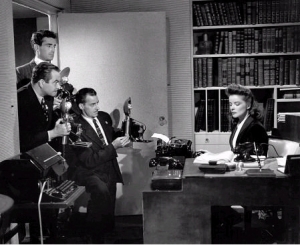 The next thing your publisher may or may not forward to you is a webinar or some other such thing about “buzzing” your book. (This seems relatively innocent, but it is actually your gateway into hell, otherwise known as marketing and promoting, so be alert!)
The next thing your publisher may or may not forward to you is a webinar or some other such thing about “buzzing” your book. (This seems relatively innocent, but it is actually your gateway into hell, otherwise known as marketing and promoting, so be alert!)
In my case, this thing sat in my inbox for several weeks before I gathered enough courage and carafes of coffee to sit down and watch it. It turns out that my apprehension was completely justified, as the webinar began to lay out just what would be necessary for my book to have even a speck of attention beyond that of my mom, a few of my siblings and a smattering of friends.
Included were uncomfortable concepts like:
Build a social platform with a website, a blog, an author FB page, an Amazon and Goodreads author page, as well as twitter, Pinterest, and Instagram accounts. (Oh, good. Nothing too hard, then.)
Look for readers, not writers, by promoting your other interests. It’s not all about the book, you know. (But does driving my kids to their after-school activities or exhaustedly plopping down in front of a BBC period drama each night with a glass of wine really count as genuine interests?)
Surf for websites, groups, forums or blogs that might review your book or promote you in some way. Look for ways you can exhibit your expertise in a certain area or be helpful to them. (Like…?)
Begin a relationship with local libraries and independent book stores. (By…?)
Form a “street crew” to go out and promote your book; crews in multiple cities preferred. (An actual group of people that wander about the streets talking about your book? Really? Why have I never witnessed such a thing?)
Plus 159 more.
It should be slowly dawning on you, darlings, that it is not enough for you to write a brilliant book. Oh, no. That hardly matters these days. It’s all about the marketing, you see, which no one mentioned when I sat down to write a book and which would have, in truth, given me pause.
Whether you are publishing with a hybrid, the big 5 or self-pubbing, the marketing hat is one you must regrettably put on. No use groaning about it to whoever might be listening or was kind enough to ask “How’s the book going?” (This might be a good place to add – right here in the beginning – that no one actually wants to hear you groan about anything related to getting your book published because, in their eyes, you’ve already reached the pinnacle, you’ve made it! Remember, they haven’t read Step 1. All complaining at this juncture will only be seen as so much sour grapes. Learn to suffer in silence. That’s what this guide is for. It’s our secret place to vent and have a nervous break-down.) So swallow your current, and possibly permanent, distaste for marketing, and let’s get on with it. Because – believe me – if I can do it, you can.
But if it turns out that you’re already somehow a pro at self-promotion and already have a stellar social media platform built, you can skip on ahead to Step 2,478 of this Guide. The rest of us will catch up with you there.
The post How to Get Your Book Published in 7000 Easy Steps – A Practical Guide.
Step 3: BEGIN TO CREATE BUZZ FOR YOUR BOOK appeared first on Michelle Cox.
January 14, 2016
From the Set of Gone With the Wind and Walt Disney Studios to an Internment Camp
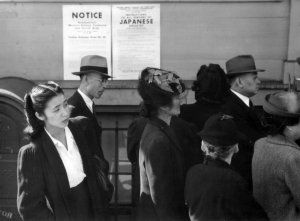 Kate Kuzuhara was born in Santa Cruz, California on March 10, 1913 to Japanese immigrants. Her father, Haru Watanabe, left Japan as a young man in search of adventure. His travels took him to Australia and then to California, where he found work as a gardener and mechanic for a wealthy man in Santa Cruz.
Kate Kuzuhara was born in Santa Cruz, California on March 10, 1913 to Japanese immigrants. Her father, Haru Watanabe, left Japan as a young man in search of adventure. His travels took him to Australia and then to California, where he found work as a gardener and mechanic for a wealthy man in Santa Cruz.
Eventually, Haru’s thoughts turned to marriage, so he wrote to his family asking them to find him a wife. Excitedly they wrote and said that they had found a good match with a neighboring family. The girl’s name was Tsugi Ishikawa, and she had a desire to see America and be educated. Thus, Haru returned to Japan to marry her and then took her back to California with him. Together, Tsugi and Haru had ten children, six of whom died in childhood. Kate, who had been born a middle child, then became the oldest.
Kate attended San Jose State University and from there went to art school in Los Angeles. She was employed by Walt Disney Studios and also worked on the set of Gone With the Wind. Her career and future indeed seemed very promising until World War II broke out and she found herself “rounded up” and taken to a “relocation center” with thousands of other Japanese-Americans. She was separated from her family and sent to the Amache camp in Colorado.
As she was boarding the bus that would take her there, however, Kate found a beautifully packed lunch on each of the seats, put there by the Quakers in an attempt to “love thy enemy.” Kate was very touched by this, and it sparked her life-long interest in the Quakers.
Kate spent three long years in the camp and there met her husband, Chiaki Kuzuhara. As a very young man, Chiaki had developed TB and spent several years suffering with his condition, thinking he was going to die, when he miraculously recovered. Shortly afterwards, however, he, too, was sent to Amache, even though his brother was in the American air force.
At Amache, Chiaki had a special kind of compassion for the sick and eventually became a sort of chaplain-like figure, a role which shaped his decision to become a minister like his father. He also decided to propose to the young Kate he had gotten to know there. He guessed that she would be a good partner because she had perfect English, which he knew would help him in his work.
When they were finally released, Kate and Chiaki moved to Chicago where his father, the Reverend Sadaichi Kuzuhara had founded a church – the Lakeside Christian Church of Chicago. Many of the interred Japanese migrated to Chicago as well as to other parts of the Midwest where there hadn’t been a previous significant Japanese population. Though many Japanese were bitter about their experience, Chiaki says that neither he nor Kate held any grudges. Chiaki says he understands the popular sentiment of the day and doesn’t blame anyone, but was glad when the US government publically proclaimed their mistake and apologized.
Chiaki says that he threw himself into his ministry, and Kate became the breadwinner of the family, finding work as a successful commercial artist in Chicago. For whatever reason, they did not have any children.
Unfortunately, Kate was not able to provide any information for this interview, having suffered a series of strokes which has left her confused and not always able to respond appropriately. Chiaki says that Kate was an extremely smart woman, but that she was very modest and didn’t always like to show her intelligence. At age 45, she decided to go back to school to become an occupational therapist and worked in that capacity at Evanston Hospital for many years.
Chiaki reports that Kate was very honest and true, a good judge of character, and had very close friends. She was fascinated by Latin culture, loved food and traveling and entertaining. She was very active in the Quaker church and loved her two careers in art and therapy. Chiaki says that she never forgot her first big breaks, however, and corresponded with her fellow artists from her days on the set of Gone With the Wind for over fifty years.
The post From the Set of Gone With the Wind and Walt Disney Studios to an Internment Camp appeared first on Michelle Cox.
January 12, 2016
How to Get Your Book Published in 7000 Easy Steps – A Practical Guide. STEP 2: PERUSE THE INTRODUCTORY STUFF FROM THE PUBLISHER
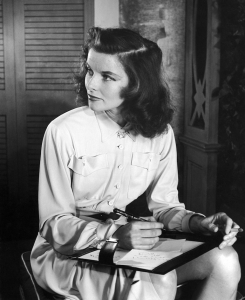 Contract – Review this document and fret over whether you should have it looked at by a lawyer, or at least someone who maybe works in a law office.
Contract – Review this document and fret over whether you should have it looked at by a lawyer, or at least someone who maybe works in a law office.
In my case, I opted for a lawyer “friend” I vaguely know from church, though I’m pretty sure this is not her area of expertise. Kindly, she agreed to look it over, however, and after dropping it off at her office, I went home to nervously wait in front of my computer for about five hours for her response. (Didn’t she know how urgent this was?) Finally I panicked, and decided to take matters into my own hands, lest the publisher change her mind at any minute should I delay any longer. I looked over the contract one last time for anything obvious (like they wanted one of my children, for example – which actually wouldn’t be such a bad thing), signed it and hurriedly emailed it back.
This began yet another couple of days of frantically checking my email for some sort of acknowledgement of the stupendous. I don’t know exactly what I was expecting, maybe something like an ecard with confetti that bursts all over the screen. Something.
Instead, I was eventually, unceremoniously, forwarded the author handbook and was instructed to read it.
Author Handbook – Depending on your publisher, you may or may not receive such a handy tome. If you do, however, spend some time reading through this useful document and try not to be scared. Fight the feelings of doubt that are already beginning to creep in.
In my case, this document was a 129-page volume with tons of information, which in and of itself threw me into panic – again. (Get used to this feeling. It’s going to come up quite a lot.) My eyes glazed over as I tried to take it all in, wondering how I would ever master all of this information. While I was at first eagerly, and then more and more listlessly, scrolling through the file, my chest feeling tighter as the sidebar slowly inched lower, I came across many alarming new terms such as:
ARC’s
Cover mechanicals
First pages
Endorsements
Tip sheets
Meta data
Warehousing
Off-set printing
Marketing (this one’s dangerous; more later)
Plus many, many more. Too much to take in upon first perusal, certainly. Try to remember to check back to it throughout the process, however, if questions arise, as the publisher, editors, proofers and project managers you will eventually work with along the way will undoubtedly respond – in an exasperated sort of tone – when asked a particularly obvious question by you, “That’s in the handbook, you know.” Sorry.
Try not to get too hung up on any one item. You’ll figure it out eventually.
The post How to Get Your Book Published in 7000 Easy Steps – A Practical Guide.
STEP 2: PERUSE THE INTRODUCTORY STUFF FROM THE PUBLISHER appeared first on Michelle Cox.
January 7, 2016
They Brought Her Home and Put Her in the Warm Oven
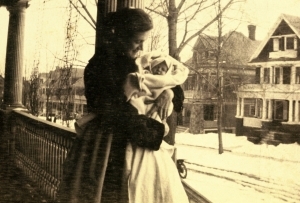 Sophie Rogers says she began life at a mere two pounds on March 17, 1915. She was born prematurely in Milwaukee, Wisconsin to Theresa Kujawa, a Polish immigrant who worked as a seamstress, and Stanislaw Bajer, a German truck driver, one of six or eight children, Sophie isn’t sure.
Sophie Rogers says she began life at a mere two pounds on March 17, 1915. She was born prematurely in Milwaukee, Wisconsin to Theresa Kujawa, a Polish immigrant who worked as a seamstress, and Stanislaw Bajer, a German truck driver, one of six or eight children, Sophie isn’t sure.
Apparently, the moment Sophie was born, barely alive at two pounds, her family rushed her across the back alley to St. Joseph’s to be baptized. She survived the baptism, however, so the family brought her back home and put her in the warm oven, her mother only supposedly removing her to feed her and occasionally place her on the seat of the rocking chair to be rocked. Though stories like this abound from that era and have been debunked as myths over the years, Sophie insists that hers is true. At any rate, she miraculously lived.
When she was three years old, the family moved to Chicago. Sophie went to school until eighth grade and then went to work as a nanny and a maid for a Jewish family. According to Sophie, the family treated her “beautifully, like one of their own.” It was Sophie’s job to care for the woman’s new baby and to be her personal maid. She was allowed one day off per week, during which she chose to go roller skating, the family even driving her to the roller rink.
Though she loved her job, Sophie eventually left to go work as a sales clerk at Goldblatts, where she met a young Jewish man, Stanley, and fell in love. They dated for several years and wanted to get married, but Stanley’s mother refused to allow it. They broke up, then, and Stanley married a young, wealthy Jewish girl. Sophie was happy for him and wished him well, despite her own heartache. She was unexpectedly vindicated one day, however, when Stanley’s mother came in to Goldblatts and admitted to Sophie that she had been wrong about her, but it was obviously too late. Sophie continued to get bits of news about Stanley over the years by writing letters to his sisters and says that she was never bitter about how it all turned out.
Eventually Sophie met another clerk at Goldblatts, Richard Rogers, a young man of English and Italian descent, whom she fell in love with and married at the Justice of the Peace. Fifty years later they had a big anniversary party and got re-married in the Catholic Church.
According to Sophie, she and Richard had a wonderful life together. Richard became a manager at Goldblatts and worked there for over fifty years. Sophie continued working there as well, even after their only child, Diane, was born. Sophie and Richard went everywhere together, their only time apart being during WWII when Richard enlisted and became a tank driver. Sophie reports that he was “a good soldier” and “came through it fine,” though he was injured in the heel and sent home.
Once back, he and Sophie picked right up where they left off, and enjoyed going out to restaurants, bars and parties. Sometimes Richard and Sophie would split up for the early part of the evening, each going to a friend’s house or a bar, before meeting up later to go somewhere together. They were actively involved in the American Legion and went to conferences all around the country. They had many, many friends.
Richard died in his seventies of cancer after a long painful fourteen months, which Sophie nursed him through. At 81, Sophie misses him still. She remained active after his death and is very proud of the fact that she learned how to use a computer. She had been living independently in an apartment above her daughter, Diane, but began falling and was eventually admitted to a nursing home. “Diane thinks I hate her for putting me here,” Sophie says. “I don’t hate her, but it’s hard to get used to.” Though Sophie is finding the adjustment hard, she remains happy-go-lucky and says that “I enjoyed life tremendously!”
The post They Brought Her Home and Put Her in the Warm Oven appeared first on Michelle Cox.
January 5, 2016
How to Get Your Book Published in 7000 Easy Steps – A Practical Guide. STEP 1: FIND A PUBLISHER
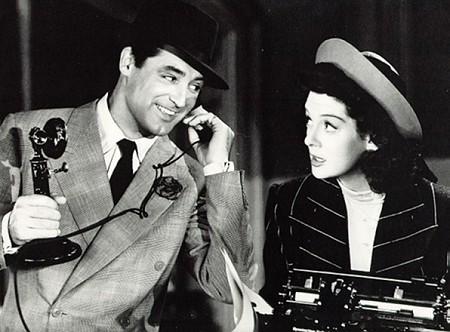 “Shouldn’t this be the last step of the Guide?” you might be asking. “The end of the book, as it were?”
“Shouldn’t this be the last step of the Guide?” you might be asking. “The end of the book, as it were?”
No, dear readers, finding a publisher is just the beginning of your long saga. Little do you know that that is merely the first baby step in the 6,999 more before you actually hold your printed book in your hands. But don’t be overly concerned. You can do it. (Lest you’re feeling faint at this point, however, I will cheer you by telling you now that I plan to skip some of the more mundane steps so that you’ll be able to finish slogging through this Guide in your natural lifetime and still have enough weeks, maybe months, to actually put it to good use.)
There are several different types of publisher out there and ways to go about securing one. Much information already exists in blog or tweet form (that’s supposed to be a joke), so go read that first. Not to scare you, but if you’re hoping to be traditionally published, only five big houses exist – in the world – and they control nearly every known press and imprint. And they are only accepting a very small percentage of new writers. So, good luck with that.
The other choice is to self-publish, which requires a certain level of wherewithal, not to mention a bottomless vat of energy, neither of which I personally possess, but you might. Again, research and decide if this is for you.
The third way is to publish with a hybrid or indie-type of press, which has its own set of pro’s and con’s, including having to at least partially subsidize your book’s birth (the obvious con), but getting to claim full parental rights (the obvious pro).
This seems a good place to reveal that the hybrid method will be the model for the rest of the Guide, and here’s why:
I admit that I foolishly attempted to publish with the Big 5 with a different novel tucked under my arm – a large, unwieldy, brilliant type of saga that went on and on for 240,000 words, entitled Love’s Labor Found (no pun intended). After about a year of searching for an agent or a publisher for this big baby, I cleverly realized that this was going nowhere. (Quick aside: If your book is over 120,000 words, give up now. Don’t think you can change anybody’s mind by waving copies of the Goldfinch or Outlander in front of them. They could care less when you wave big books at them. My advice is to start over.)
I started over, determined to create something more publishable and, well, marketable. Thus, A Girl Like You – a shorter, more exciting mystery/romance set in the 1930’s – was born. And I decided to make it into a series, just for a bit of extra mileage. Soured now, however, on the Big 5, I turned instead to a hybrid press, self-publication being out of the question (see above).
Unlike my long, arduous journey towards the Big 5 with LLF, however, my path to a hybrid was really quite short and smooth and one which I can highly recommend. But was it the new and improved book or the publisher that made it so much easier? I suppose no one will ever know, but here I am, and I haven’t looked back once.
The post How to Get Your Book Published in 7000 Easy Steps – A Practical Guide.
STEP 1: FIND A PUBLISHER appeared first on Michelle Cox.



